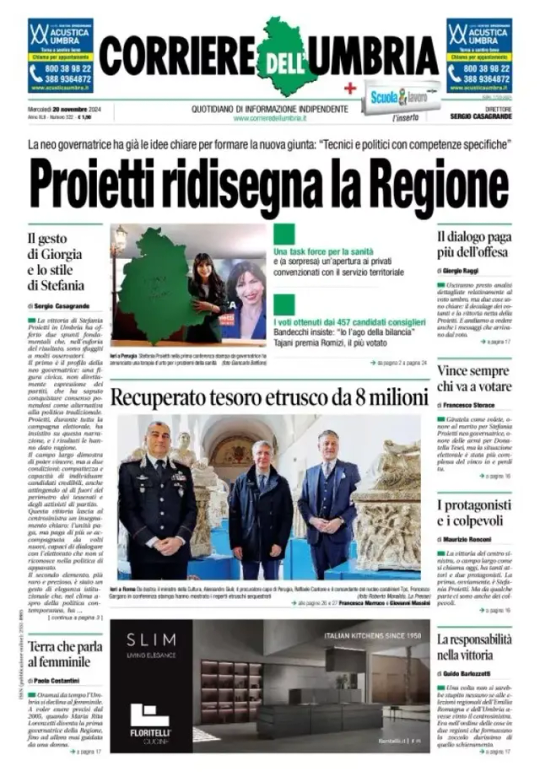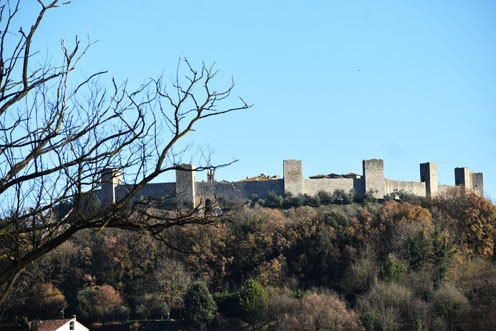#etrusco
Explore tagged Tumblr posts
Text
Sarcófagos y estatuas etruscas del museo cívico arqueológico de Bologna.

#arqueologia#historia#culture#history#archaeology#travel#bologna#etruscan#arte#etrusco#estatua#sarcofago#sarcophagus
13 notes
·
View notes
Video
Etruscan Pottery X: The Wolf-man or the Shape of Fate. por Egisto Sani Por Flickr: At center, infernal daemon represented as a Wolf-man. According to some scholars, this figure represents the soul of a man bound to the world of the dead. The Etruscan demonizing conception transforms this figure in a man-wolf, a daemon-wolf. Therefore the "monster" could be identified as a restless soul: primarily the spirit of people who had not received a ritual burial, or who had died violently or prematurely. See the cinerary urn - Volterra, Museo Guarnacci - depicting an enchained monster with wolf head who tries to get out of a puteal. Pontic Plate Height 9.4 cm, diameter 20.0 cm. Attributed to the Tityos Painter Ca. 520 BC From Vulci Rome, Villa Giulia, Museo Nazionale Etrusco
#Museo Nazionale Etrusco#Roma#Herakles#Eracle#Heracles#Nessos#Nessus#Nesso#Deianira#Deianeira#“Wolf-man””uomo#Lupo”#Plate#piatto#“Tityos#Painter”#“Pittore#di#Tityos”#Etruscan#Etrusco#Etrusca#“pontic#Style”#“Stile#Pontico“#ceramic#pottery#vases#ceramica
2 notes
·
View notes
Text
Se sono Gentile ed Educato non confondere questo con la stupidità, è l'Inferno che ho vissuto che mi ha ingentilito ed educato, donandomi anche un Demone da risvegliare quando mi mancano di Rispetto, Credimi, meglio non Svegliarlo!
[Etrusco]
7 notes
·
View notes
Photo

PRIMA PAGINA Corriere Umbria di Oggi mercoledì, 20 novembre 2024
#PrimaPagina#corriereumbria quotidiano#giornale#primepagine#frontpage#nazionali#internazionali#news#inedicola#oggi umbra#governatrice#regione#giorgia#stile#stefania#terra#parla#femminile#task#recuperato#tesoro#etrusco#sempre#votare#nella
0 notes
Text
youtube
#etruschi#etrusco#etruria etrusca#marcocostaindustry#veio#anticaroma#esoterismo#divinazione#aruspici#fulgoratores#magia#psicologia#romanzo#saga#fantasy#Youtube
0 notes
Text

Assassinio al cimitero etrusco (1982)
Enzo Sciotti art
#assassinio al cimitero etrusco#the scorpion with two tails#murder in an etruscan cemetery#1980s horror#1980s movies#1982#sergio martino#giallo#enzo sciotti#poster art#horror art#art#painting
203 notes
·
View notes
Text


2 MINERVAs: 'Small Bronzes' - Two [votive] statuettes of fighting Minerva, both wear Aegis Etrusco-Umbrian, 'Maestro Fiesole' Workshop 450-400 BC. 'In the Umbro-Sabellian area the production of small bronze statues developed around the beginning of the 5th c. BC.' 'Divinities are often reproduced, among which the portrayal of Minerva on the attack, wearing a high-crested Attic helmet and a cuirass with a gorgoneion in the middle of the breast, an outstandingly valuable specimen from the 2nd-half of the 5th c. BC, attributed to a master working in northern Umbria.' [Txt ©ETRU]
Museo Nazionale Etrusco di Villa Giulia, Rome | ETRU [Floor 1, Sala 16 'Kircher Collection']
Web : https://www.museoetru.it/en
FB : https://www.facebook.com/VillaGiuliaRm
IG : @ museoetruscovillagiulia
X : @ VillaGiuliaRm
YT : https://www.youtube.com/@museoetruTV
ETRU | Michael Svetbird phs©msp | 28|09|24 6400X4500 600 [I.] The photographed objects are collection items of ETRU [Non-commercial fair use | No AI | Author rights apply | Sorry for the watermarks]
📸 Part of the "Small-Format Sculpture and Miniature Artifacts" MSP Online Photo-gallery:
👉 D-ART: https://www.deviantart.com/svetbird1234/gallery/69450077/small-format-sculpture-and-miniature-artifacts
👉 FB Album: https://www.facebook.com/media/set/?set=a.859777984390780&type=3
.
#rome#museo etrusco villa giulia#villa giulia#etruscan museum#archaeological museum#etru#etruria#umbria#etruscan#umbrian#etruschi#bronzes#statuette#ancient#art#sculpture#antiquity#archaeology#art history#heritage#mythology#minerva#goddess#museology#culture#antiquities#museum photography#archaeology photography#art photography#michaelsvetbird
77 notes
·
View notes
Text

Oil flask (aryballos) in the form of a seated monkey
, c. 560 BCE
Terracotta, 9.5 x 5.1 cm (3 3/4 x 2 in.)
on display at Harvard Art Museums 1960.290
“In the 6th century BCE, workshops in…the multicultural contact zone…produced an array of faience flasks combining Egyptian & Greek elements [and] motifs….Whimsical monkey-shaped containers were popular in Italy.”
#animals in art#museum visit#ancient art#monkey#effigy vessel#animal effigy#primates#Etrusco-Corinthian#Etruscan#flask#aryballos#ceramics#terracotta#Harvard Art Museums
21 notes
·
View notes
Text
The Golden Orphism Book, the oldest book in the world.

El Libro del Orfismo de Oro, el libro más antiguo del mundo.
(English / Español / Italiano)
Perhaps the oldest multi-page book in the world, dating from around 660 BC, it was discovered in the Strouma River in Bulgaria. The book is made of six sheets of twenty-four carat gold, each 5x4.5 cm, held together by rings. The Book of Golden Orphism, created over 2500 years ago, contains illustrations of a horse, a mermaid, a harp, soldiers, and text in the Etruscan language. The book was anonymously donated to the National Museum of History in Sofia, where it is currently housed. The authenticity of the book has been confirmed by two experts in Sofia and London, according to the museum's director. The Etruscans were a people originating from Lydia, in what is now Turkey, settling in central Italy about three thousand years ago. Thracian Orphism combined the cult of the Earth and the cult of the Sun, personified by Orpheus and Zalmoxis.
------------------------------------------------------------------------------
Quizás es el libro de varias páginas más antiguo del mundo, datado hacia el 660 a.C, fue descubierto en el río Strouma, en Bulgaria. El libro está hecho de seis láminas de oro de veinticuatro quilates, de 5 x 4,5 cm cada una, unidas por dos anillos. El Libro del Orfismo de Oro, creado hace más de 2500 años, contiene ilustraciones de un caballo, una sirena, un arpa, soldados, y texto en lengua etrusca. El libro fue donado anónimamente al Museo Nacional de Historia de Sofia, donde se encuentra actualmente. La autenticidad del libro ha sido confirmada por dos expertos en Sofía y Londres, según el director del museo. Los etruscos fueron un pueblo originario de Lidia, en lo que es actualmente Turquía, asentándose en la Italia central hace tres mil años aproximadamente. El orfismo tracio combinaba el culto a la Tierra y el culto al Sol, personificado por Orfeo y Zalmoxis.
------------------------------------------------------------------------------
Forse il più antico libro a più pagine del mondo, risalente al 660 a.C. circa, è stato rinvenuto nel fiume Strouma in Bulgaria. Il libro è composto da sei fogli d'oro a ventiquattro carati, de 5 x 4,5 cm ciascuno, tenuti insieme da due anelli.
Il Libro dell'Orfismo d'Oro, creato oltre 2500 anni fa, contiene illustrazioni di un cavallo, una sirena, un'arpa, soldati e testi in lingua etrusca. Il libro è stato donato anonimamente al Museo Nazionale di Storia di Sofia, dove è attualmente conservato.
L'autenticità del libro è stata confermata da due esperti a Sofia e a Londra, secondo il direttore del museo. Gli Etruschi erano un popolo originario della Lidia, nell'attuale Turchia, che si stabilì nell'Italia centrale circa tremila anni fa. L'orfismo tracio combinava il culto della Terra e quello del Sole, personificato da Orfeo e Zalmoxis.
Source: Indika Ki Som. Arqueologia, Historia y Arte
#ancient history#historia antigua#etruscos#etruscans#etruschi#7th century bc#660 bc#s.VII a.C.#The Book of Golden Orphism#Libro dell'Orfismo d'Oro
3 notes
·
View notes
Text









#pensieri per la testa#persa tra i miei pensieri#fotografia#foto#scatto fotografico#museo#arte#storia#cultura#sarcofago etrusco#museo colle del duomo#Viterbo#scultura#particolari#dettagli#statua#dea della fecondità
5 notes
·
View notes
Text

“Come un ballo a due quando le luci in sala si spengono e non si riesce a distogliere lo sguardo” ~ 🤍 ©
2 notes
·
View notes
Text
Studi / Roma, riapre al pubblico la biblioteca storica del Museo Nazionale Etrusco di Villa Giulia Oltre 20 mila volumi su storia, arte e archeologia etrusco-italica consultabili su prenotazione I dettagli su @storieearcheostorie @museoetruscovillagiulia #archeologia #etruschi #studi
0 notes
Text
Il Premio Strega 2025, il riconoscimento letterario più prestigioso della narrativa italiana, si avvicina alla sua fase decisiva.
#Alessandria today#Andrea Bajani#Andrea Moro#autori emergenti#Baracca e Burattini#Chiudo#Cinquantun giorni#cultura letteraria#Dario Buzzolan#editoria e cultura.#editoria italiana#Eventi culturali#finalisti Premio Strega#Google News#Il coccodrillo di Palermo#italianewsmedia.com#L’anniversario#L’isola di Elsa#LETTERATURA CONTEMPORANEA#lettura e scrittura#libri consigliati#Michele Masneri#migliori libri 2025#Museo Nazionale Etrusco#narrativa d’autore#narrativa italiana#nuove uscite editoriali#Paolo Nori#Paradiso#Pier Carlo Lava
0 notes
Text
youtube
#fabio frizzi#horror soundtrack#italian horror#assassino al cimitero etrusco#the scorpion with two tails#Youtube#horror
0 notes
Text
Monteriggioni e le sue Mura
di Salvina Pizzuoli “Perocchè come in su la cerchia tonda Monte Reggion di torri si corona, (DANTE Inferno XXXI). Siamo a Monteriggioni per una visita al castello e ai camminamenti sulle mura, itinerario previsto insieme alla visita al Museo Archeologico con sede a Badia a Isola. (per i dettagli) Siamo di fronte all’ingresso al castello, all’imponente Porta Romea. Due lastre marmoree si…

View On WordPress
0 notes
Text




ETRUSCAN ANTEFIXES | Villa Giulia Museum: Modern reconstruction of Etruscan temple roofs in life size with reproduced antefixes.
👉 Pics 1 and 4 - Temple of Apollo [ETRU reconstruction] originally built around 510 BC in Etruscan city of Veii [Portonaccio archaeological site], north of Rome. https://en.wikipedia.org/wiki/Portonaccio
👉 Pic 2 - Temple of Alatri, "a model with the real dimensions of an Etruscan-Italic temple.. constructed between 1889 and 1890, on the basis of ruins found in Alatri in the immediately preceding years. The building repeats the decorative designs of the architectural terracottas of the original temple that dates between the 3rd and 2nd centuries BC. This reconstruction is one of the oldest experiments of open-air musealization of an archaeological complex." [txt ©ETRU] https://en.wikipedia.org/wiki/Alatri
👉 Pic 3 - Reconstruction of a temple roof with original antefixes. From Falerii Novi [probably from the Sanctuary of Mercury], 6 BC https://en.wikipedia.org/wiki/Falerii
Featured in 'Etruscan Antefixes: Aesthetically Distinguished, Mysteriously Charged' article ANTIQVVS Magazine | Autumn 2024 Issue https://www.antiqvvs-magazine.com
Museo Nazionale Etrusco di Villa Giulia, Rome | ETRU
Web : https://www.museoetru.it/en
FB : @ VillaGiuliaRm
IG : @ museoetruscovillagiulia
X : @ VillaGiuliaRm
YT : @ museoetruTV
ETRU | Michael Svetbird @michael-svetbird phs ©MSP ©Antiqvvs Magazine | 28|09|24 The photographed objects are collection items of ETRU [Non-commercial fair use | No AI | Author rights apply | Sorry for the watermarks]
.
#rome#museo etrusco villa giulia#villa giulia#etruscan museum#archaeological museum#etru#etruria#etruscan#etruschi#antefix#antefixes#ancient#architecture#architectonic#terracotta#antiquity#history#archaeology#art history#heritage#mythology#goddess#museology#culture#antiquities#historical research#publication#michaelsvetbird#antiqvvs#antiqvvs magazine
21 notes
·
View notes